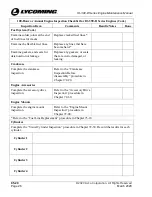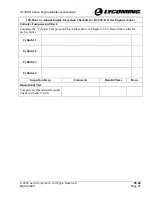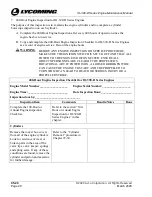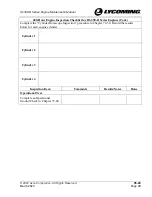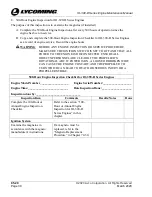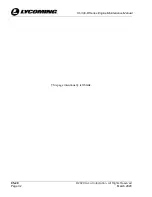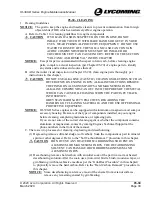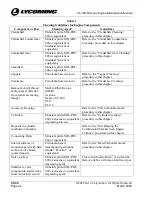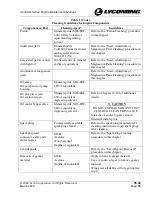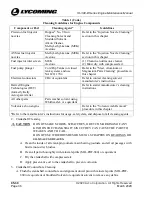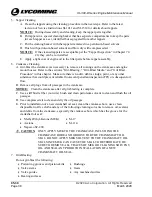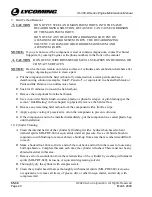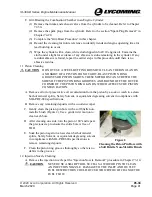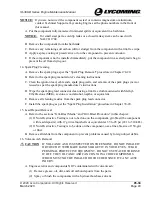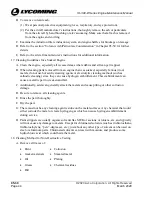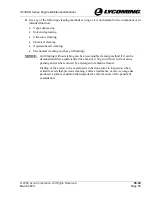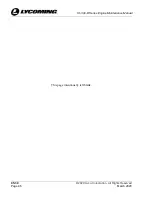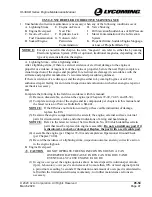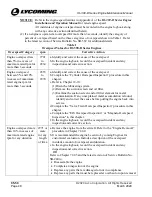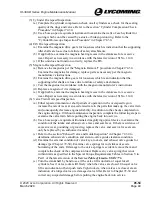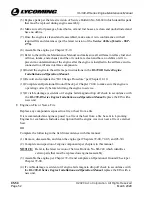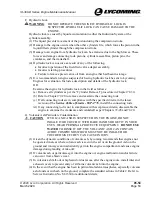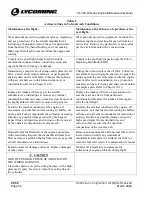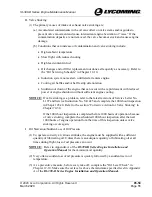
IO-390-D Series Engine Maintenance Manual
05-30
© 2020 Avco Corporation. All Rights Reserved
Page 40
March 2020
IO-390-D Series Engine Maintenance Manual
9.
Hard Carbon Removal
CAUTION
DO NOT PUT STEEL AND MAGNESIUM PARTS INTO THE SAME
DECARBONIZING SOLUTION, BECAUSE IT CAN CAUSE CORROSION
OF THE MAGNESIUM PARTS.
DO NOT USE ANY HEATED DECARBONIZING SOLVENT ON
ALUMINUM OR MAGNESIUM PARTS. THE DECARBONIZING
SOLVENT CAN DAMAGE OR CORRODE MAGNESIUM AND
ALUMINUM PARTS.
NOTICE:
If you are not sure if the component is steel or contains magnesium, contact Technical
Support at Lycoming Engines at the phone numbers in the front of the manual.
CAUTION
DO NOT USE WIRE BRUSHES OR METAL SCRAPERS ON BEARINGS OR
CONTACT SURFACES.
NOTICE:
Hard carbon can remain on interior surfaces of cylinders and combustion chambers after
using a degreasing solvent to clean a part.
A.
Put the component with the hard carbon fully immersed into a warm petroleum-based
decarbonizing solution (examples: Gunk
®
, Penetrol
®
, or equivalent) in a heated bath tank or
Paint and Ink Remover in an ultrasonic cleaner.
B.
Soak for 10 minutes (to loosen the hard carbon).
C.
Remove the component from the bath tank.
D.
Use a (non-wire) bristle brush, wooden, plastic, or phenolic scraper, or grit-blasting (per the
section “Grit-Blasting” in this chapter) to physically remove the hard carbon.
E.
Remove any remaining hard carbon from the component with a lint-free wipe.
F.
Apply a spray coating of preservative oil on the component to prevent corrosion.
G.
If the component is not to be installed immediately, put the component in a sealed plastic bag
until installation.
10.
Cylinder Cleaning
A.
Clean the internal barrel of the cylinder by flushing it with a hydrocarbon-based solvent
(mineral spirits MIL-PRF-680 or equivalent) under air pressure. Use a soft bristle brush in
conjunction with flushing to remove abrasive build-up from areas that are otherwise difficult
to reach.
B.
Make a hooked tool from soft wire and rub the tool back and forth in the recess to loosen any
built-up abrasive. Complete this task each time the cylinder is flushed. There must not be any
abraded material in this area.
C.
Remove all oil accumulation from the external sides of the cylinders by washing with mineral
spirits (MIL-PRF-680), kerosene, or equivalent degreasing solvent.
D.
Thoroughly dry the cylinder with compressed air.
E.
Clean the cylinder head fin areas thoroughly with mineral spirits (MIL-PRF-680), kerosene
or equivalent, to remove all traces of grease, dirt, or other foreign matter, and air dry with
compressed air.

